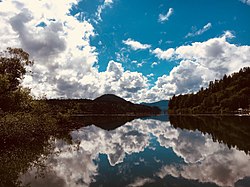Cowichan Valley | |
|---|---|
| Cowichan Valley Regional District | |
 | |
 Location in British Columbia | |
| Country | Canada |
| Province | British Columbia |
| Administrative office location | Duncan |
| Government | |
| • Type | Regional district |
| • Body | Board of directors |
| • Chair | Kate Segall |
| • Vice chair | Tim McGonigle |
| • Electoral areas |
|
| Area | |
| • Land | 3,474.52 km2 (1,341.52 sq mi) |
| Population (2021) [2] | |
• Total | 89,013 |
| • Density | 25.6/km2 (66/sq mi) |
| Website | www |
The Cowichan Valley Regional District is a regional district in the Canadian province of British Columbia that is on the southern part of Vancouver Island, [3] bordered by the Nanaimo and Alberni-Clayoquot Regional Districts to the north and northwest, and by the Capital Regional District to the south and east. As of the 2021 Census, the Regional District had a population of 89,013. The regional district offices are in Duncan.
Contents
- Geography
- Communities
- Incorporated communities
- Indigenous Reserves
- Electoral areas
- Demographics
- Notes
- References
- External links
The current Chair of the Cowichan Valley Regional District is Kate Segall [4]